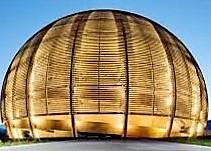Speaker
Description
F. Hammache$^1$, P. Adsley$^{2,3,*}$, L. Lamia$^{4,5,6}$, D.~S. Harrouz$^1$, N. de Séréville$^{1}$, B. Bastin$^7$, T. Faestermann$^{8}$, C. Fougères$^7$, R. Hertenberger$^{9}$, M. La Cognata$^{5}$, A. Meyer$^{1}$, S. Palmerini$^{10,11}$, R.G. Pizzone$^{5}$, F. de Oliveira$^7$, S. Romano$^{4,5,6}$, A. Tumino$^{12,5}$, H.-F. Wirth$^{9}$
$^1$ Université Paris-Saclay, CNRS/IN2P3, IJCLab, 91405 Orsay, France
$^2$ School of Physics, University of the Witwatersrand, Johannesburg 2050, South Africa
$^3$ iThemba Laboratory for Accelerator Based Sciences, Somerset West 7129, South Africa
$^4$ Dipartimento di Fisica e Astronomia "E. Majorana", Univ. di Catania,95123 Catania, Italy
$^5$ Laboratori Nazionali del Sud - Istituto Nazionale di Fisica Nucleare, 95123 Catania, Italy
$^6$Centro Siciliano di Fisica Nucleare e Struttura della Materia CSFNSM, Catania, Italy
$^7$ GANIL, CEA/DRF-CNRS/IN2P3, 14076 Caen, France
$^8$ Physik Department E12, Technische Universität München, D-85748 Garching, Germany
$^9$ Fakultät für Physik, Ludwig-Maximilians-Universität München, D-85748 Garching, Germany
$^{10}$ Dipartimento di Fisica e Geologia, Università degli Studi di Perugia, 06123 Perugia, Italy
$^{11}$ Istituto Nazionale di Fisica Nucleare, Sezione di Perugia, 06123 Perugia, Italy
$^{12}$ Facoltà di Ingegneria e Architectura, Università degli Studi "Kore'', 94100 Enna, Italy
$^*$ Present address:Cyclotron Institute and Department of Physics & Astronomy, Texas A&M University, College Station, Texas 77843, USA
Recent models of low metallicity rotating massive stars show the possibility of a large production of s-elements between strontium and barium. The efficiency of the s-process in these stars depends strongly on the ratio of the reaction rates of the two competing $^{17}$O($\alpha$,n)$^{20}$Ne and $^{17}$O($\alpha,\gamma$)$^{21}$Ne reactions [1]. This ratio determines the influence of the poisoning effect of $^{16}$O which consumes the neutrons released by the $^{22}$Ne($\alpha$,n)$^{25}$Mg reaction, the main neutron source for the weak component of the s-process in massive stars. Indeed, the neutrons consumed by $^{16}$O(n,$\gamma$)$^{17}$O may either be released by $^{17}$O($\alpha$,n)$^{20}$Ne or lost for good via $^{17}$O($\alpha,\gamma$)$^{21}$Ne. However, the reaction rates of these two competing reactions are poorly known because of the lack of spectroscopic information ($\Gamma_\alpha$, J$^\pi$, $\Gamma_n$, $\Gamma_\gamma$,...) of the astrophysical relevant states in the compound nucleus $^{21}$Ne. To have a better determination of $^{17}$O($\alpha$,n)$^{20}$Ne and $^{17}$O($\alpha,\gamma$)$^{21}$Ne reaction rates, the $\alpha$-widths of the states of interest were determined experimentaly for the first time through the measurement of their $\alpha$-spectroscopic factors. The latter were determined from the $\alpha$-transfer reaction $^{17}$O($^7$Li,t)$^{21}$Ne measurement [2] performed at MLL-Munich, using the high-energy resolution magnetic spectrometer Q3D. The measured and calculated DWBA differential cross sections of the different populated states will be presented as well as the obtained $\alpha$-spectroscopic factors and the $\alpha$-widths of the relevant states in $^{21}$Ne. Finally, the $^{17}$O($\alpha$,n)$^{20}$Ne and $^{17}$O($\alpha,\gamma$)$^{21}$Ne reactions rates calculations and their corresponding uncertainties using our obtained $\alpha$-widths and the most recent measured neutron widths [3] will be presented. Our rates favour the neutron recycling via $^{17}$O($\alpha$,n)$^{20}$Ne reaction instead of losing them via $^{17}$O($\alpha,\gamma$)$^{21}$Ne reaction and suggest an enhancement by a very large factor of the s-elements between Ba and Sr.
[1] U. Frischknecht, R. Hirschi et al., MNRAS 456, 1803 (2016), arXiv:1511.05730 [astro-ph.SR].
[2] F. Hammache, P. Adsley, L. Lamia et al., to be submitted soon
[3] J.Frost-Schenk, P. Adsley, A. M. Laird, R. Longland et al. submitted to MNRAS (private communication)
